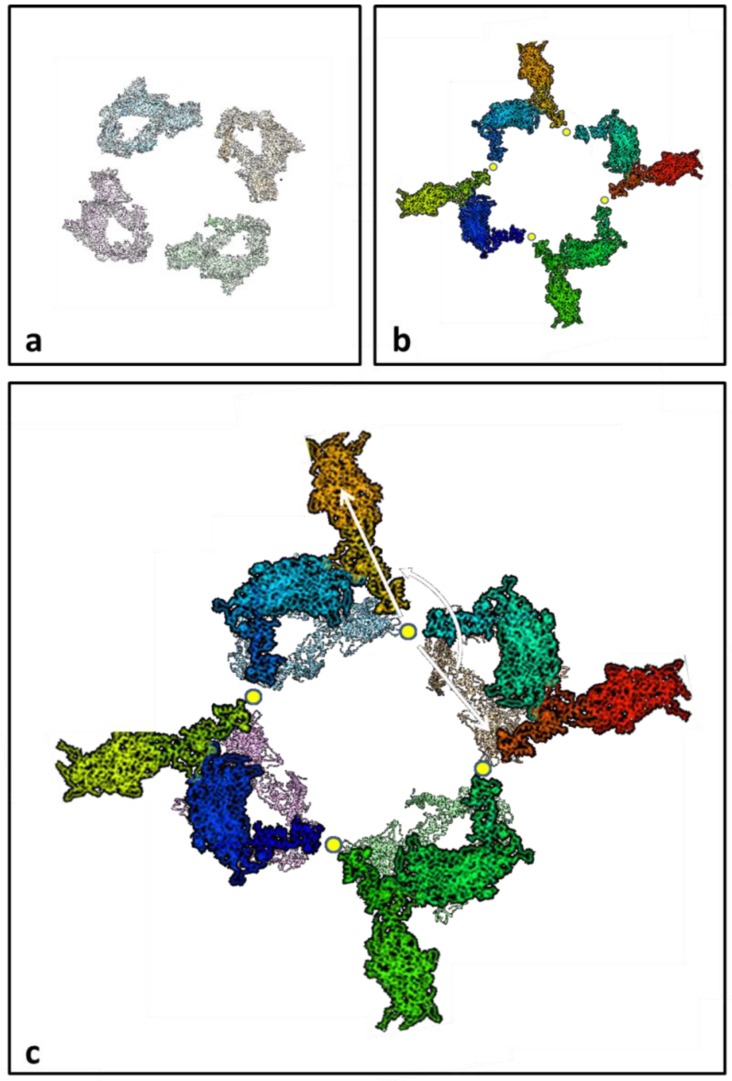Figure 12.
(a) One crown of the IHM (super-relaxed?) head configuration on the myosin filaments of insect flight muscle, looking M-wards and showing the interacting head motif (cf. Figure 9). (b) One crown of the resting insect flight muscle myosin filament (slightly refined from) reported by AL-Khayat al [11], at the rotation around its long axis that best fits with the structure from Hu et al. [27], with the S2 positions coincident and showing one head near the filament surface and the other projecting radially outwards from the filament backbone (shown here as an empty space). (c) The structures in (a,b) are superimposed to show the similar, overlapping, locations of one of each head pair and the changed positions of the other heads between the two structures. The white arrows indicate, for the free head swing model, the swing of the free heads around the S2 positions, which are shown as small yellow dots, between what we assume is the super-relaxed state and what we now think of as the “activated” relaxed state. In an alternative mechanism (not illustrated), the head switch mechanism, the outer blocked head in the IHM structure moves to project radially outwards and the inner free IHM head moves out to the position originally occupied by the blocked head.

